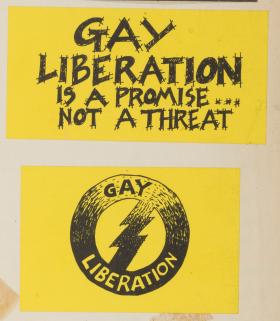Being seen and heard in the 70s
Students will investigate the continuing nature of the gay rights movement in Australia, beginning in the 1970s.
Key inquiry question #1
How did the gay rights movement begin in 1970 and why?
Key inquiry question #2
How have societal views about and laws relating to the LGBTIQ+ community changed as a result of the campaigns presented in the online exhibition?
Key inquiry question #3
What was different about the campaigns from the 70s and more recent campaigns for marriage equality?
Learning intention
Students are learning to:
- use and interpret a range of historical sources presented in the form of an online exhibition
- understand the evolution of social reform
- compare civil rights movements from the past with recent campaigns
Success criteria
Students will be successful when they can:
- process and synthesise information from a range of sources
- explain the reasons for campaigning for LGBTIQ+ rights
Student Activities
An era of change
Students will use an online exhibition as a key source to help them understand the gay rights movement of the 1970s including the nature of the campaigns and the impact on societal attitudes. Students will also compare the initial movement from the 1970s with the more recent marriage equality ‘yes’ campaign.

Background information for teachers and students
Before the 1970s same-sex relationships were taboo in most Western societies. The 1960s ushered in an era of change. Civil rights movements around the world created opportunities to reform society. The 1969 Stonewall riots in New York triggered the rise of gay rights movements internationally and Australians soon took up the fight. Sydney quickly became a hub of activism.
‘Coming out’ — openly admitting same-sex orientation at the risk of rejection, discrimination, abuse or even death — became a brave political strategy, challenging the sexually conservative attitudes of Australian society.
This exhibition marks the 50th anniversary of the emergence of the gay and lesbian rights movement in Australia. Although the struggle for equality is not over, sexual diversity is widely acknowledged in Australia today and celebrated through annual pride festivals like the Sydney Gay and Lesbian Mardi Gras. Many of the rights we take for granted are the direct result of the personal sacrifices and hard-fought activism of the 70s.
Additional resources
ABC Radio Focus program on the ABC website
NSW Syllabus for the Australian Curriculum History K–10
A Student:
- HT 5–3 explains and analyses the motives and actions of past individuals and groups in the historical contexts that shaped the modern world and Australia
- HT 5–6 uses relevant evidence from sources to support historical narratives, explanations and analyses of the modern world and Australia
- HT 5–8 selects and analyses a range of historical sources to locate information relevant to an historical inquiry
- HT 5–10 selects and uses appropriate oral, written, visual and digital forms to communicate effectively about the past for different audiences
The continuing nature of efforts to secure civil rights and freedoms in Australia and throughout the world, such as the Declaration on the Rights of Indigenous Peoples (ACDSEH143)
Students:
- identify different methods used globally to attain civil rights and freedoms
- evaluate the methods and effectiveness of ONE campaign for civil rights and freedoms in Australia or another country
Students:
- read and understand historical texts
- sequence historical events to demonstrate the relationship between different periods, people and places
- interpret history through the actions, values, attitudes and motives of people in the context of the past
- ask and evaluate different kinds of questions about the past to inform an historical inquiry
- identify, locate, select and organise information from a variety of sources, using ICT and other methods
Students demonstrate understanding of:
- Reasons for change and continuity in a particular historical context, eg rights and freedoms of groups in Australian society
- Critical and creative thinking
- Ethical understanding
- Civics and citizenship